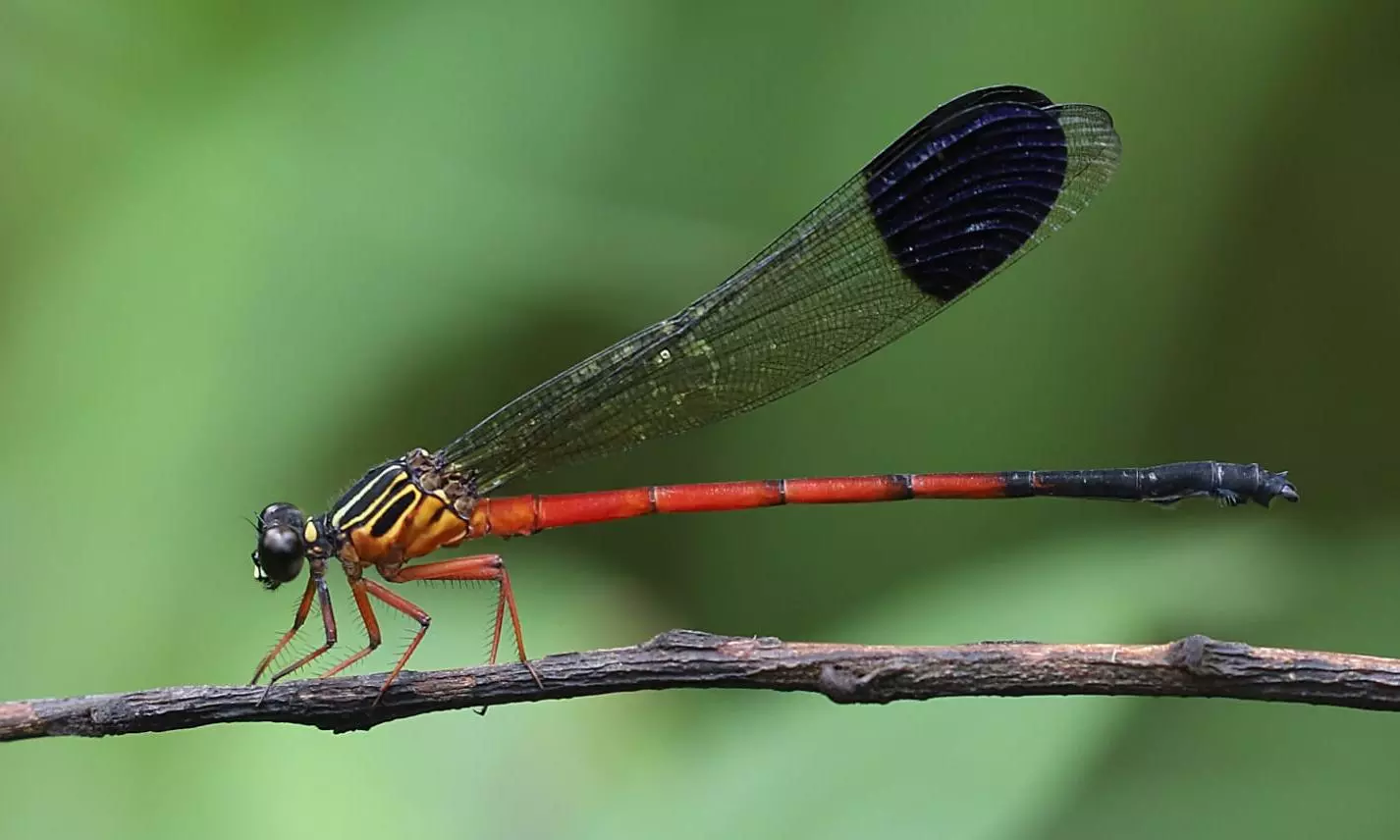A New Species of Damselfly Discovered in Wayanad Landscape
The newly discovered species has a highly restricted distribution and specific habitat requirements, emphasizing the need for targeted surveys to map aquatic ecosystems in the Coorg-Wayanad landscape

THIRUVANANTHAPURAM: A new species of damselfly, "Euphaea wayanadensis", from the family Euphaeidae, has been discovered in the Wayanad region of the Western Ghats in Kerala.
The findings were published in the March edition of the prestigious journal "ENTOMON".
The new species was identified through integrated taxonomy, which included both morphological and molecular analysis. The research team that discovered the species included S.S. Anooj (Kerala Agricultural University - College of Agriculture, Vellayani, Thiruvananthapuram), C. Susanth (Warblers and Waders, Thiruvananthapuram), Dr. Kalesh Sadasivan (TNHS, Thiruvananthapuram), Vijayan P. Nair (Alphonsa College, Pala), Dr. Dattaprasad Sawant and Dr. Milind Bhakare (Maharashtra).
These findings highlight the rich biodiversity of the Western Ghats, particularly in ecologically sensitive regions like Wayanad. The damselfly has been named "Euphaea wayanadensis", after the district Wayanad where it was first observed.
Members of this genus inhabit torrential streams and forest waters and are commonly referred to as "Torrent Darts." The newly discovered species is specifically called the Wayanad Torrent Dart. This species is the 223rd Odonata (dragonflies and damselflies) documented from the Western Ghats and the 191st from Kerala.
The species was first identified as a distinct morphotype in 2013 during a field survey of the Kalindi River in Thirunelli, Wayanad district, conducted by the researchers. Subsequent observations continued until 2023, including additional locations such as Aralam in Kannur and the western slopes of Coorg in Karnataka.
The newly discovered species has a highly restricted distribution and specific habitat requirements, emphasizing the need for targeted surveys to map aquatic ecosystems in the Coorg-Wayanad landscape. This is particularly important, as many regions are prone to cloud bursts, flash floods, landslides, and habitat degradation.
The study calls for area-targeted conservation plans in the Western Ghats to protect aquatic invertebrates, especially rare and endemic species.

